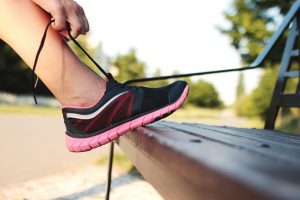Which Type of Insole is Right for You?
- What should I know above all else when choosing an insole?
- How can I tell if the insole I’m using is working?
- What are the different types of insoles I should use for conditions like flat feet, low arches, and high arches?
- What are the most common foot injuries you see and how do they occur?
An estimated 20 to 30 percent of the population suffers from foot conditions such as flat feet or fallen arches. Below, Daniel L. Wiernik, D.P.M., of Orlando Orthopaedic Center answers the more common questions he hears regarding foot health and choosing the right insoles.
What should I know above all else when choosing an insole?
Insoles aid in controlling the way your foot functions. They can provide added support and protection for your feet, as well as increase comfort by accommodating the shape of your foot. When choosing an insole, the most important thing to keep in mind is the type of arch your foot has, low or high. Above all, they should feel very comfortable and supportive to you when you try them on.
How can I tell if the insole I’m using is working?
You’ll know your insole is a good match for you if you feel relief or improvement in your condition. Your insole wouldn’t cause you damage without you noticing. If your insole were causing damage, you would feel your condition getting worse.
What are the different types of insoles I should use for conditions like flat feet, low arches, and high arches?
Flat feet to medium-arch conditions benefit from more rigid inserts that will help your foot with control. I would recommend more flexible orthotics with more cushion for high arches. A ¾ length insole is used more commonly to help control your foot. Full length insoles have additional padding in the forefoot and can be modified to help specific forefoot conditions.
What are the different types of insoles I should use for conditions like flat feet, low arches, and high arches?
Flat feet to medium-arch conditions benefit from more rigid inserts that will help your foot with control. I would recommend more flexible orthotics with more cushion for high arches. A ¾ length insole is used more commonly to help control your foot. Full length insoles have additional padding in the forefoot and can be modified to help specific forefoot conditions.




